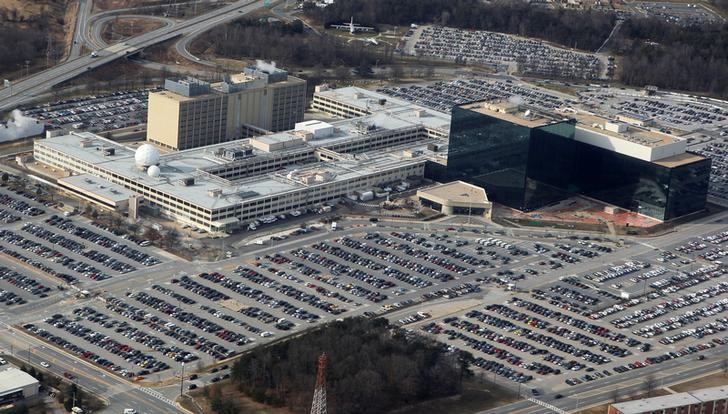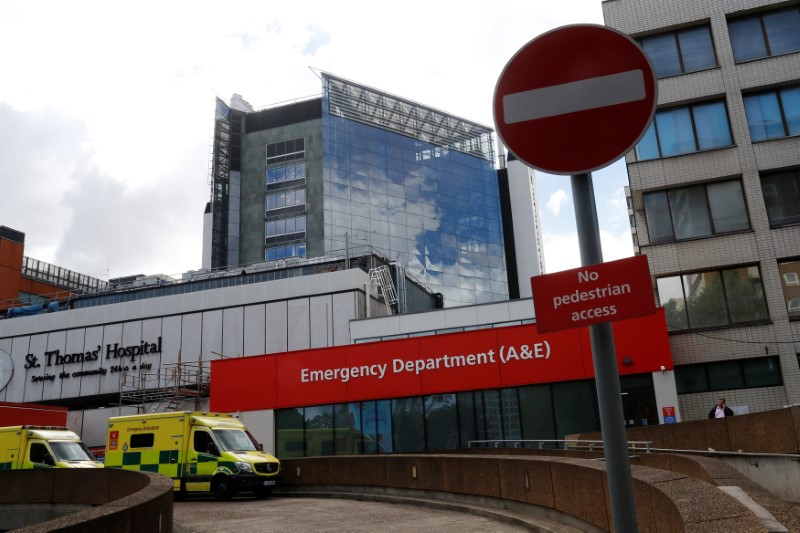
Major Cyber Attack Hits Companies, Hospitals, Schools Worldwide
LONDON/MADRID (Reuters) – A global cyber attack leveraging hacking tools believed to have been developed by the U.S. National Security Agency has infected tens of thousands of computers in nearly 100 countries including South Africa, disrupting Britain’s health system and global shipper FedEx. Cyber extortionists tricked victims into opening malicious malware attachments to spam emails […]

LONDON/MADRID (Reuters) – A global cyber attack leveraging hacking tools believed to have been developed by the U.S. National Security Agency has infected tens of thousands of computers in nearly 100 countries including South Africa, disrupting Britain’s health system and global shipper FedEx.

Cyber extortionists tricked victims into opening malicious malware attachments to spam emails that appeared to contain invoices, job offers, security warnings and other legitimate files.
The ransomware encrypted data on the computers, demanding payments of $300 to $600 to restore access. Security researchers said they observed some victims paying via the digital currency bitcoin, though they did not know what percent had given in to the extortionists.
Researchers with security software maker Avast said they had observed 57,000 infections in 99 countries, with Russia, Ukraine and Taiwan the top targets.
Asian countries reported no major breaches on Saturday, but officials in the region were scrambling to check and the full extent of the damage may not be known for some time.
China’s official Xinhua news agency said some secondary schools and universities had been affected, without specifying how many or identifying them.
The most disruptive attacks were reported in Britain, where hospitals and clinics were forced to turn away patients after losing access to computers on Friday.
International shipper FedEx Corp said some of its Windows computers were also infected. “We are implementing remediation steps as quickly as possible,” it said in a statement.
FROM ARGENTINA TO SPAIN
Only a small number of U.S.-headquartered organizations were hit because the hackers appear to have begun the campaign by targeting organizations in Europe, said Vikram Thakur, research manager with security software maker Symantec.
By the time they turned their attention to the United States, spam filters had identified the new threat and flagged the ransomware-laden emails as malicious, Thakur added.
Infections of the worm appeared to have fallen off significantly after a security researcher bought a domain that the malware was connecting to, by chance undermining the malware’s effectiveness.
Making the domain active appears to have stunted the spread of the worm, Thakur said on Saturday.
“The numbers are extremely low and coming down fast,” he said, while cautioning that any change in the original code could lead the worm to flare up again.
The U.S. Department of Homeland Security said late on Friday it was aware of reports of the ransomware, was sharing information with domestic and foreign partners and was ready to lend technical support.
Telecommunications company Telefonica was among many targets in Spain, though it said the attack was limited to some computers on an internal network and had not affected clients or services. Portugal Telecom and Telefonica Argentina both said they were also targeted.
Private security firms identified the ransomware as a new variant of “WannaCry” that had the ability to automatically spread across large networks by exploiting a known bug in Microsoft’s Windows operating system.
The hackers, who have not come forward to claim responsibility or otherwise been identified, likely made it a “worm”, or self spreading malware, by exploiting a piece of NSA code known as “Eternal Blue” that was released last month by a group known as the Shadow Brokers, researchers with several private cyber security firms said.
“This is one of the largest global ransomware attacks the cyber community has ever seen,” said Rich Barger, director of threat research with Splunk, one of the firms that linked WannaCry to the NSA.
The Shadow Brokers released Eternal Blue as part of a trove of hacking tools that they said belonged to the U.S. spy agency.
Microsoft said it was pushing out automatic Windows updates to defend clients from WannaCry. It issued a patch on March 14 to protect them from Eternal Blue.
“Today our engineers added detection and protection against new malicious software known as Ransom:Win32.WannaCrypt,” Microsoft said in a statement on Friday, adding it was working with customers to provide additional assistance.
SENSITIVE TIMING
The spread of the ransomware capped a week of cyber turmoil in Europe that began the previous week when hackers posted a trove of campaign documents tied to French candidate Emmanuel Macron just before a run-off vote in which he was elected president of France.
On Wednesday, hackers disrupted the websites of several French media companies and aerospace giant Airbus.Also, the hack happened four weeks before a British general election in which national security and the management of the state-run National Health Service (NHS) are important issues.
Authorities in Britain have been braced for cyber attacks in the run-up to the vote, as happened during last year’s U.S. election and on the eve of the French vote.
But those attacks – blamed on Russia, which has repeatedly denied them – followed a different modus operandi involving penetrating the accounts of individuals and political organisations and then releasing hacked material online.
On Friday, Russia’s interior and emergencies ministries, as well as its biggest bank, Sberbank, said they were targeted. The interior ministry said on its website that about 1,000 computers had been infected but it had localized the virus.
The emergencies ministry told Russian news agencies it had repelled the cyber attacks while Sberbank said its cyber security systems had prevented viruses from entering its systems.
NEW BREED OF RANSOMWARE
Although cyber extortion cases have been rising for several years, they have to date affected small-to-mid sized organisations, disrupting services provided by hospitals, police departments, public transport systems and utilities in the United States and Europe.
“Seeing a large telco like Telefonica get hit is going to get everybody worried. Now ransomware is affecting larger companies with more sophisticated security operations,” said Chris Wysopal, chief technology officer with cyber security firm Veracode.
The news is also likely to embolden extortionists when selecting targets, Chris Camacho, chief strategy officer with cyber intelligence firm Flashpoint, said.
In Spain, some big firms took pre-emptive steps to thwart ransomware attacks following a warning from the National Cryptology Centre of “a massive ransomware attack”.
Iberdrola and Gas Natural, along with Vodafone’s unit in Spain, asked staff to turn off computers or cut off internet access in case they had been compromised, representatives from the firms said.
The attacks did not disrupt the provision of services or networks operations of the victims, the Spanish government said in a statement.


(Additional reporting by Jim Finkle, Eric Auchard, Jose Rodriguez, Alistair Smout, Andrea Shalal, Jack Stubbs, Antonella Cinelli, Dustin Volz, Kate Holton, Andy Bruce, Michael Holden, David Milliken, Rosalba O’Brien, Julien Toyer, Tim Hepher, Luiza Ilie, Patricia Rua, Axel Bugge, Sabine Siebold and Eric Walsh, Engen Tham; Editing by Rob Birsel and Mike Collett-White)
IMPORTANT TIPS FROM WORDFENCE.COM
South Africa is one of the countries believed to have been affected. Wordfence released this public service security announcement for all users of computers running any version of Windows.
How Can You Tell If Your Computer Is Infected?
The most obvious way to tell if your computer has been affected is if you are seeing a ransomware pop-up screen when you start up your computer. But because we don’t know how long the malware sits on your computer or network, not seeing this pop-up isn’t necessarily an indication that you haven’t been infected. The bottom line: if your Windows computer has connected to a shared network, such as those found in schools, public places, cafes and businesses, and you don’t have complete control over every computer on that network and haven’t been keeping Windows up-to-date, your computer may be infected.
How to Protect Yourself From the Vulnerability
According to Microsoft a fix for this vulnerability was released on March 14th for all affected versions of Windows. If you are running Windows and have automatic updates enabled you should be okay. If you don’t and haven’t updated recently you should update to the most recently released version immediately. It is important to note that unsupported versions of Windows, like XP, did not receive this security update. Those systems should either be isolated or shut down.
Please pass this along to your friends and family. Those that are less technical may not have updates auto-enabled, and may need a helping hand updating their operating system.